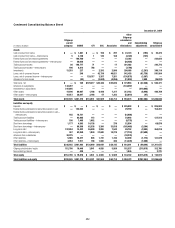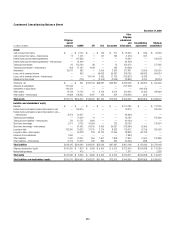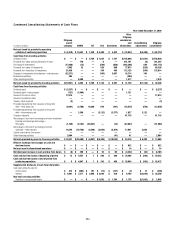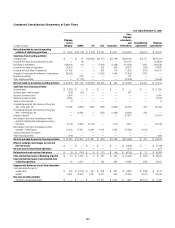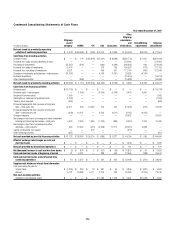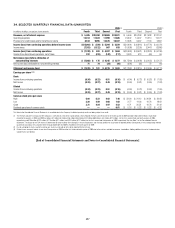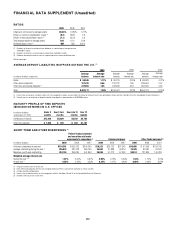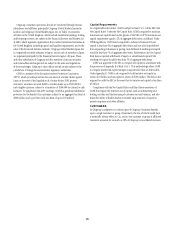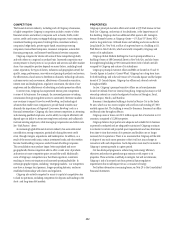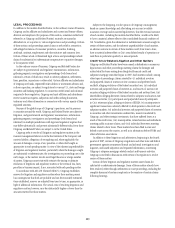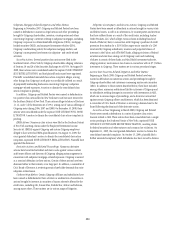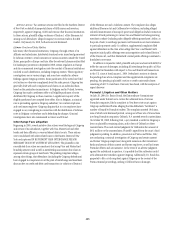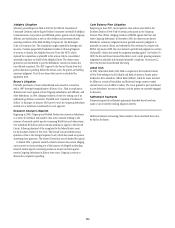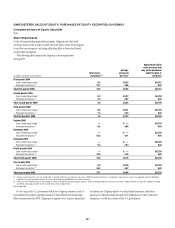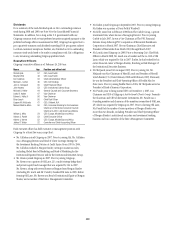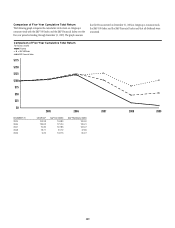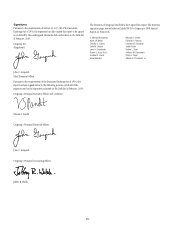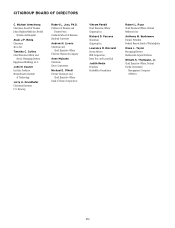Citibank 2009 Annual Report Download - page 272
Download and view the complete annual report
Please find page 272 of the 2009 Citibank annual report below. You can navigate through the pages in the report by either clicking on the pages listed below, or by using the keyword search tool below to find specific information within the annual report.262
COMPETITION
The financial services industry, including each of Citigroup’s businesses,
is highly competitive. Citigroup’s competitors include a variety of other
financial services and advisory companies such as banks, thrifts, credit
unions, credit card issuers, mortgage banking companies, trust companies,
investment banking companies, brokerage firms, investment advisory
companies, hedge funds, private equity funds, securities processing
companies, mutual fund companies, insurance companies, automobile
financing companies, and Internet-based financial services companies.
Citigroup competes for clients with some of these competitors globally
and with others on a regional or product basis. Increased competition may
create pressure to lower prices on our products and services and affect market
share. Our competitive position depends on many factors, including brand
name, reputation, the types of clients, industries and geographies served, the
quality, range, performance, innovation and pricing of products and services,
the effectiveness of and access to distribution channels, technology advances,
customer service and convenience, effectiveness of transaction execution,
interest rates and lending limits, regulatory constraints, the talent of our
employees and the effectiveness of advertising and sales promotion efforts.
In recent years, Citigroup has experienced intense price competition
in some of its businesses. For example, the increased pressure on trading
commissions from growing direct access to automated, electronic markets
may continue to impact Securities and Banking, and technological
advances that enable more companies to provide funds transfers may
diminish the importance of Regional Consumer Banking’s role as a
financial intermediary. Citigroup also faces intense competition in attracting
and retaining qualified employees, and its ability to compete effectively will
depend upon its ability to attract new employees and retain and sufficiently
motivate existing employees, while managing compensation and other costs.
See “Risk Factors” above.
An increasingly global financial services industry has seen substantial
consolidation among companies, particularly during the recent credit
crisis, through mergers, acquisitions and bankruptcies. In addition, as a
result of the recent credit crisis, certain investment banks and other entities
became bank holding companies and/or financial holding companies.
This consolidation may produce larger, better capitalized and more
geographically diverse competitors able to offer a wider array of products
and services at more competitive prices around the world. Additionally,
some of Citigroup’s competitors may face fewer regulatory constraints
resulting in lower cost structures and increased operating flexibility. In
certain geographic regions, including “emerging markets,” our competitors
may have a stronger local presence, longer operating histories, and more
established relationships with clients and regulators.
Citigroup also actively competes for access to capital at competitive rates
to fund its operations, including competition for deposits and funding in the
short- and long-term debt markets.
PROPERTIES
Citigroup’s principal executive offices are located at 399 Park Avenue in New
York City. Citigroup, and certain of its subsidiaries, is the largest tenant of
this building. Citigroup also has additional office space in 601 Lexington
Avenue (formerly known as Citigroup Center—153 East 53rd Street, NYC)
under a long-term lease. Citibank leases one building and owns another in
Long Island City, New York, and has a long-term lease on a building at 111
Wall Street in New York City, which are totally occupied by Citigroup and
certain of its subsidiaries.
Citigroup Global Markets Holdings Inc. has its principal offices in a
building it leases at 388 Greenwich Street in New York City, and also leases
the neighboring building at 390 Greenwich Street, both of which are fully
occupied by Citigroup and certain of its subsidiaries.
Citigroup’s principal executive offices in EMEA are located at 25 and 33
Canada Square in London’s Canary Wharf. Citigroup has a long-term lease
for both buildings, and is the sole tenant of 33 Canada Square and the largest
tenant of 25 Canada Square. Citigroup has offices and a branch network
throughout EMEA.
In Asia, Citigroup’s principal executive offices are in leased premises
located at Citibank Tower in Central, Hong Kong. Citigroup has major or full
ownership interests in country headquarter locations in Shanghai, Seoul,
Kuala Lumpur, Manila, and Mumbai.
Banamex’s headquarters building is located in Mexico City in the Santa
Fe area, which is a two-tower complex with six floors each totaling 257,000
rentable square feet. The building is owned by Banamex. Banamex has office
and branch sites throughout Mexico.
Citigroup owns or leases over 82.2 million square feet of real estate in 101
countries, comprised of 12,800 properties.
Citigroup believes its properties are adequate and suitable for its business
as presently conducted and are adequately maintained. Citigroup continues
to evaluate its current and projected space requirements and may determine
from time to time that certain of its premises and facilities are no longer
necessary for its operations. There is no assurance that Citigroup will be able
to dispose of any such excess premises or that it will not incur charges in
connection with such dispositions. Such disposition costs may be material to
Citigroup’s operating results in a given period.
Citi has developed programs to achieve long-term energy efficiency
objectives and reduce its greenhouse gas emissions with respect to its
properties. These activities could help to mitigate, but will not eliminate,
Citigroup’s risk of increased costs from potential future regulatory
requirements that would impact Citi as a consumer of energy.
For further information concerning leases, see Note 29 to the Consolidated
Financial Statements.


